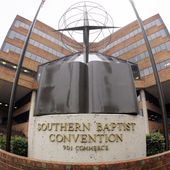A picture may be worth 1,000 words, but the Obama administration’s controls on photojournalists may say even more about how this White House sees the role of a free press in the digital age, analysts say.
A week after nearly 40 media organizations filed a formal protest with the administration over its frequent use of government photographers — rather than independent journalists — to document President Obama, top free-press advocates and photojournalism leaders argue the issue runs far deeper than the usual media/White House dust-up and should concern all Americans.
“In this case, the White House is limiting access so it can control images. That strikes me as being inconsistent with the spirit of the First Amendment,” said Ken Paulson, president of the First Amendment Center and the former editor of USA Today. “The White House is clearly trying to put its best photographic foot forward. Also, it wants to minimize risks. Photographers are journalists. If journalists are in the room, they potentially could witness history, and it may not be the kind of history the White House wants them to view.”
The administration’s policy seems to directly contradict the president’s pledge to oversee the most open and transparent White House in history.
Instead, the White House Correspondents’ Association — the lead author of the recent letter protesting a lack of access to the president — and the other media organizations argue this administration has taken significant steps backward when it comes to journalists’ ability to cover the commander in chief.
Specifically, complaints center on so-called “private” meetings the president has held recently, including those with former Secretary of State Hillary Rodham Clinton and with Israeli and Palestinian peace negotiators.
Those meetings have been closed to the independent media, but not long after they concluded, the White House released official government-produced images of the events through its Facebook, Twitter, Flickr and other social media pages.
The administration has pushed back against the charge that it’s stifling media access, arguing that it does not see White House employees as replacements for the press; rather, they’re a part of the larger effort to give the American people even more access to the president, White House officials maintain.
“There are certain circumstances where it is simply not feasible to have independent journalists in the room when the president is making decisions. Rather than close that off to the American public, what we’ve done is we’ve taken advantage of new technology to give the American public even greater access to behind-the-scenes footage of the president doing his job … to the American public, that is a clear win,” principal deputy White House press secretary Josh Earnest said Nov. 21, the day media groups delivered their letter to the administration.
Mr. Earnest and press secretary Jay Carney have indicated they’ll continue to work with news organizations to ensure greater transparency, and they will review current policies and look for ways to allow journalists access to the president wherever and whenever possible.
But the problem is bigger than just the recent examples cited by the White House press corps, and shines a light on an administration that, more than any before it, seeks to micromanage its public image, according to Kenny Irby, a veteran photojournalist and senior faculty member in visual journalism at the Poynter Institute who has covered multiple administrations.
“This has been problematic. I think, potentially, it is a part of what has become a broader profile of this administration — totally attempting to manage and spin perspective out of the press office and the administrative staff,” Mr. Irby said, adding that the release of official government photos and videos on social media is part of a larger White House “propaganda machine” and by no means should be mistaken for journalism.
“This administration has used technology, and my concern is they’ve used it totally to their gain and not to the greater good of the democracy,” he said.
On the surface, it may appear there are few differences between photographs taken and published by official White House photographer Pete Souza versus those released by a major news organization.
The untrained eye may not make much distinction, but in reality, this White House has greatly limited the number of journalists able to capture the president on film and thereby cut down on the number of professionals able to present their point of view to the American people, Mr. Irby said.
“I know how the system used to work. It used to be that over the course of a 14- to 30-day period you would see a range of perspectives, of agencies and independent photographers, who are allowed to have photo ops and time with the president. Now, you see a pipeline of [photos from] Pete Souza, one person. That in and of itself does not respect the great diversity of voices and options that need to be included,” Mr. Irby said.
The practical ramifications are that Americans simply may not get the same full and accurate picture of an important White House meeting or other event.
“If photographers are no longer in the room, there’s a lot of information and spontaneity the public won’t be aware of. Whether it’s the look on the face of a world leader in response to a comment by President Obama … that is information of value to the American people and we cannot afford to give them short shrift,” Mr. Paulson said.
• Ben Wolfgang can be reached at bwolfgang@washingtontimes.com.



Please read our comment policy before commenting.